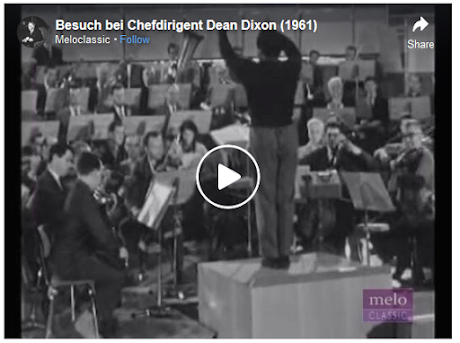The 1970s are hardly ancient history, but the decade seems like a distant world that had African American symphony and opera conductors in a few highly visible positions. Though not exactly common, Black conductors were a definite presence — long-emerging careers blossomed and young firebrands soared out of left field, each in ways that intersected around that time.
This lost generation of African American conductors led major concerts by Arturo Toscanini’s NBC Symphony, gave the Philadelphia Orchestra premiere of the Shostakovich Symphony No. 8, and led the Metropolitan Opera’s celebrated rehabilitation of Meyerbeer’s Le Prophète. Most of them were robbed of that over-60 elder-statesman period when the world was likely to more widely celebrate their accumulation of artistic wisdom. But there’s ample proof that Dean Dixon (1915–76) and Calvin Simmons (1950–82) had many great moments well before then. They can be counted among the finest of any generation.
Their contemporaries include Henry Lewis (1932–96), who conducted 143 performances at the Met between 1972 and 1977 (including Le Prophète). James DePreist (1936–2013) built the Oregon Symphony over 20-plus years, and received the National Medal of Arts from George W. Bush. Paul Freeman (1936–2015) extensively recorded under-represented African American composers for Sony Classical, and went on to hold number of appointments, most notably the Victoria (BC) Symphony from 1979 to 1988. Isaiah Jackson (b. 1945) brought the massive Mahler Symphony No. 8 to Dayton, Ohio, and extensively conducted ballet at the Royal Opera House, Covent Garden.
What happened to these particular musicians? You name it — including freaky strokes of bad luck. When in Prague recording Beethoven’s Symphony No. 7, Dixon was forced to make a hasty departure when the country was invaded by the Soviet Union. When he was in his late 20s, DePreist contracted polio while on a State Department–sponsored visit to Bangkok and was paralyzed in both legs. And during a brief, pre-dinner canoe trip while vacationing in the Adirondack Mountains, Simmons capsized and drowned at age 32.
A Maestro Abroad
Harlem-born Dixon was the first, perhaps the greatest so far — and the one most overtly blocked by racism: In a profession that’s about authority, some musicians rebelled against the very idea of a Black man telling them what to do. After early successes in 1940s America that had little follow-up, Dixon decamped to Europe where he more or less worked himself to death, arriving back in the U.S. in weakened condition in his last six years. Musicians still knew they were in the company of a towering talent, but at least one also observed that he had a colostomy bag.
His career has interesting parallels the Jewish-Hungarian Georg Solti, whose beginnings in post-war Germany had him facing hostile, anti-Semitic musicians, forcing him to make his career in London and Chicago while also building a recording profile with the Vienna Philharmonic. Dixon faced similar resistance in America; the Rufus Jones Jr. biography Dean Dixon: Negro at Home, Maestro Abroad (Rowman & Littlefield, 2015) recalls one story: Upon asking for a more “agitato” reading of the violin solo in Don Juan, Dixon was angrily accused of personally insulting the associate concertmaster of the NBC Summer Symphony. Reactions among other musicians were predominately sympathetic to Dixon, who had his own way of handling it. “Strauss has written agitato and I would like to have a bit more agigato,” was Dixon’s measured reply. Though both Solti and Dixon shared an almost defiantly vigorous approach musical interpretations of Beethoven, Bruckner, and Mahler, they were temperamental opposites: Solti shouted, Dixon did not.
https://www.wqxr.org/story/americas-lost-generation-black-conductors/






No comments:
Post a Comment